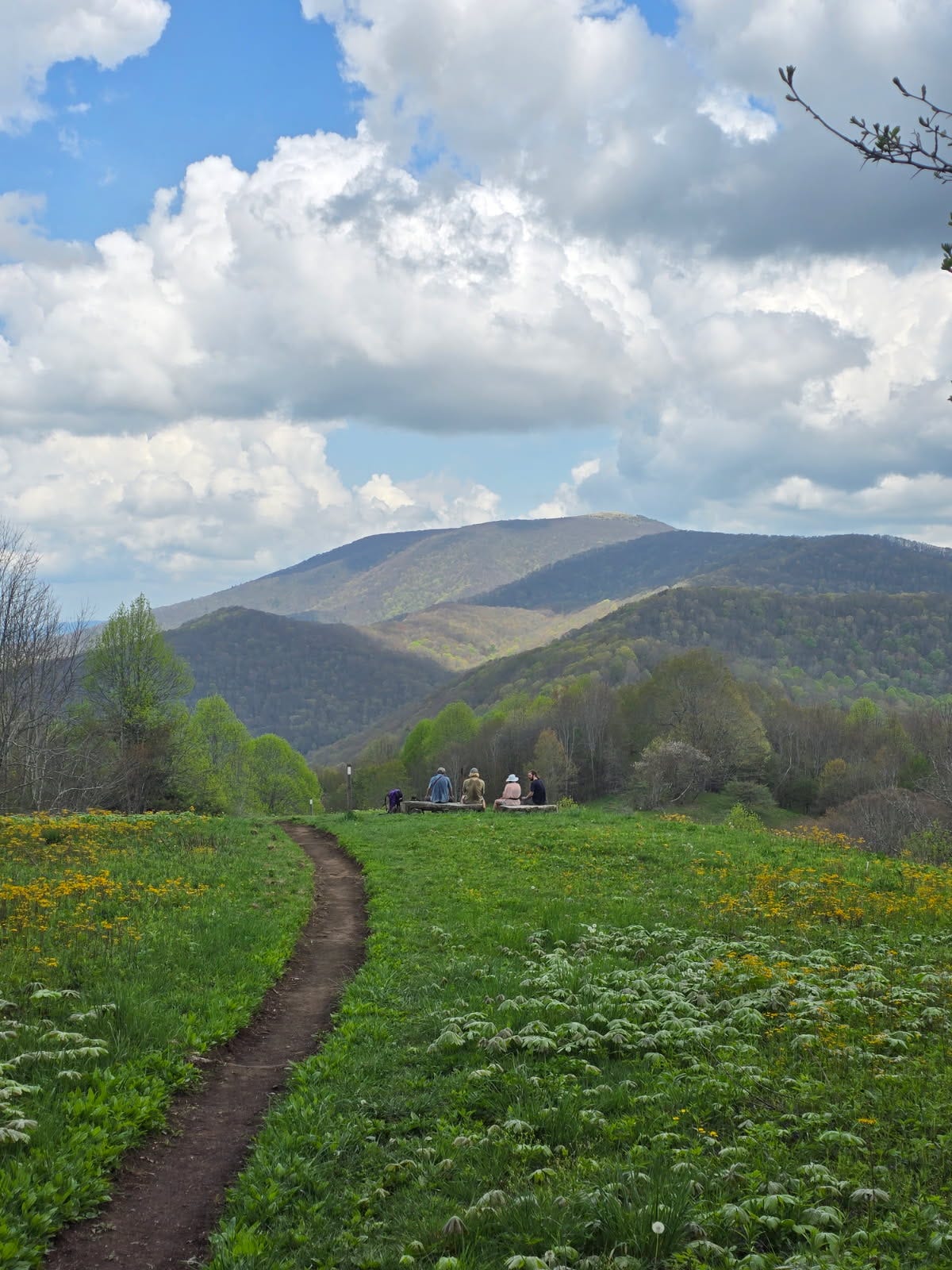AT Musings: Reflecting on Helene’s wrath & community resilience
From what I’ve gathered over the last few weeks in Helene-torn trail
In September 2024, Hurricane Helene wreaked havoc across the southeastern US, striking southern Appalachia particularly hard in eastern Tennessee, western North Carolina and even into Virginia. It dealt irreparable damage to town and city infrastructures across the region, and it took away the livelihood of countless folks along the Appalachian Trail and beyond. While there was a general lack of national media coverage, the stories that surfaced afterward are hard to fathom.
Over the last few weeks, I’ve been hiking through the hardest-hit areas on the AT and seeing the damage firsthand. In Erwin, TN, a small city on the banks of the Nolichucky River, a massive concrete bridge collapsed due to overwhelming river debris, resulting in subsequent flooding and destruction. In Hot Springs, NC, the French Broad River and its creeks rose 8 1/2 feet in a few hours, washing away much of their downtown. Highland towns like Roan Mountain and Hampton, TN, sitting at well over 3,000 feet in elevation, experienced flooding and displacement.
After the storm broke, panic ensued for the AT community as well. Initially, the Appalachian Trail Conservancy (ATC) closed about 800 miles of trail from Virginia southbound; SOBO hikers from ‘24 were told to pause their journey indefinitely. The closures slowly reduced over time, and eventually it tallied up to about 200-something miles between Hot Springs, NC and Damascus, VA. Selfishly, I remember being concerned that my long-planned hike would have to be postponed because of the damage. Reports from fearless backpackers who went in to examine the trail damage pointed to serious tree blowdowns that made the trail impassable.
A phrase commonly uttered out here is “the Trail provides,” and it feels quite applicable to this post-Helene situation. After the storm, folks came to the area with their chainsaws and water canteens, looking to help however they could. The local trail maintaining clubs, such as the Carolina Mountain Club and Tennessee Eastman Hiking & Canoeing Club, quickly got to work, cleaning up everything from the thick spruces of the Roan highlands to the river walks on the French Broad. Walking on this portion of the trail, you can see just how strong the storm was, with countless trees standing 50+ feet tall knocked to the ground everywhere.
But you can also clearly see the blood, sweat and tears put in by the maintainers, who did everything they can to clean up this sacred footpath.The path is “paved” for us hikers, with fresh wood shavings and heaps of logs on its banks, and it is to the maintainer crews and volunteers that we owe a ton of gratitude. To think that 2025 NOBOers are able to hike this section, with only 6.5 miles of rerouting needed, is remarkable — mind you, early estimates suggested there would be roughly 300 miles of catastrophic damage along the trail. As for the felled bridge on the Nolichucky River in Erwin, a daily raft service for hikers to cross was established, making for a uniquely 2025 experience.
When I first saw the way the trail wove through those seemingly endless debris fields, especially above the deep drop of Spivey Gap, I thought of it as a miracle, an act of divine intervention. And then, of course, I realized that such an idea undermined the exhausting and dangerous work of the volunteers who had done what no government or god had bothered to do: save the 2025 AT season by putting their own lives on pause. — Grayson Haver Currin, Backpacker Magazine
Of course, there is also the immense damage to the communities of these hills, both physically and mentally. I’ve quickly learned that the people you meet along the trail are the true heart and soul of these mountains, and you can feel the trauma deeply in the stories of the aftermath. But the generosity and fervor of these mountain people shine incredibly bright.
From the free hiker-meets-local low country boil at Uncle Johnny’s Hostel in Erwin, to the delectable Smoky Mountain Diner in Hot Springs and the Southern Cookie Lady, who feeds hikers cookies and cobbler in exchange for donations to the Hot Springs library, loving kindness radiates from these mountains. I’m in awe of their resilience in the face of adversity; coming together and practicing optimism despite their home getting washed away. I was also reminded of how special Southern cooking and hospitality are.
After walking through this section, I feel an even stronger connection to the Appalachian Trail community. It is a powerful thing that gravitates around positivity and acts of service. In today’s troubled world, it feels rare to see people come together like this, to bandage wounds and recover. To see it in real time is a gift.
Tomorrow, tens of thousands of AT community members will convene in Damascus, VA, to celebrate the 100th anniversary of this footpath in grand fashion. It feels almost too apt that one of the biggest storms in the history of the Trail happened just before its centennial. As hikers, I believe the least we can do to give back is support these communities’ businesses and donate what we can. There is such a strong, mutually beneficial relationship between the Trail and these towns.
To my dear readers: I kindly ask you to consider donating a few bucks to any of these communities, if you feel so inclined.
Happy Trails and Namaste,
Munk (now spelt like funk)












Feeling very fortunate I thru hiked the AT in 2021! And it reminds me of the foraged chicken of the woods mushroom and ramp recipe inspired from my Appalachian Trail thru hike. check it out:
https://thesecretingredient.substack.com/p/what-my-great-grandfathers-memoir